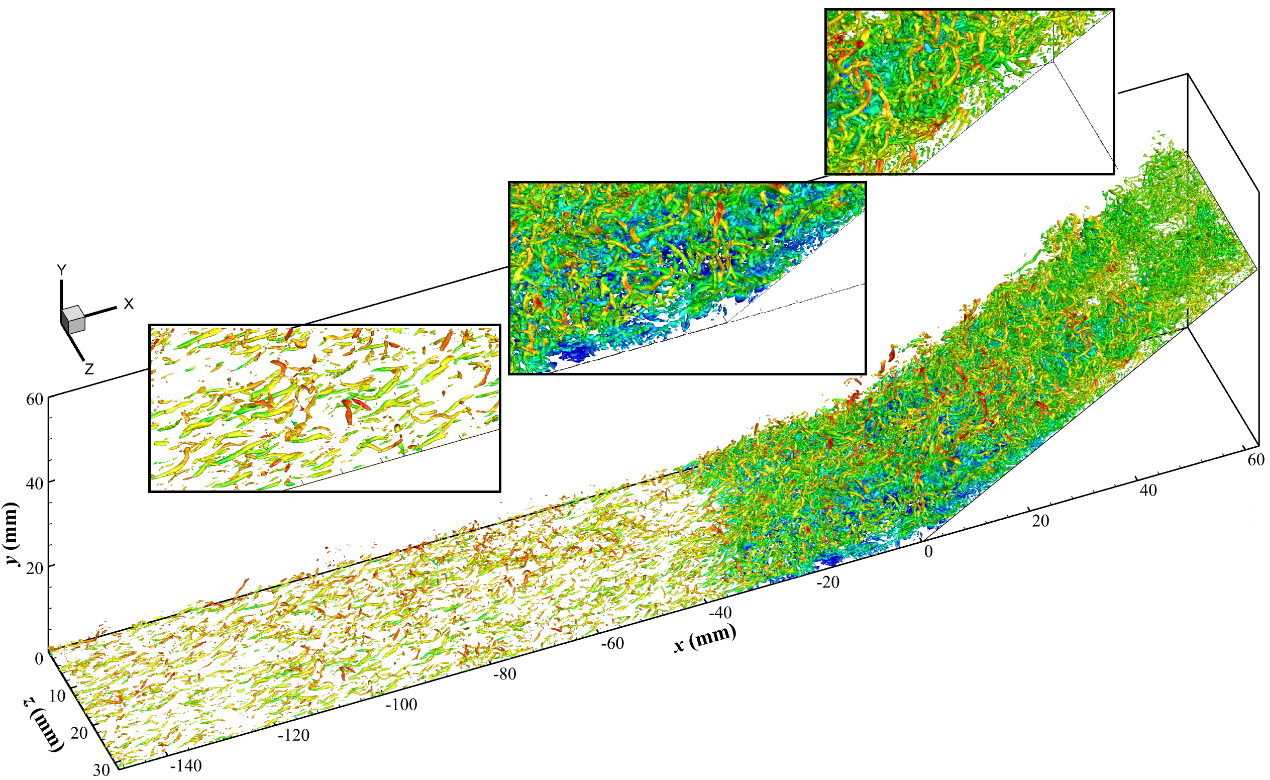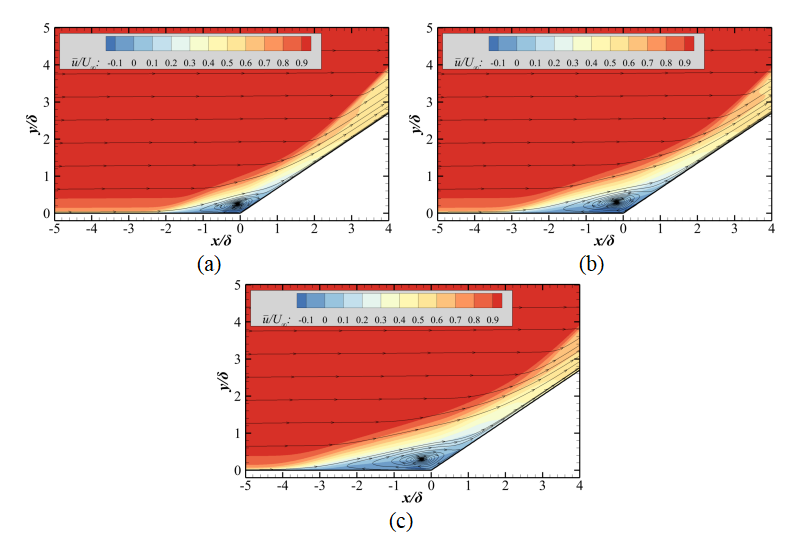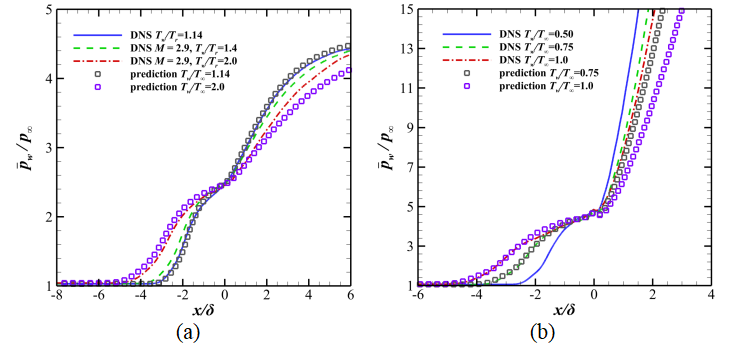Shock wave/turbulent boundary layer interactions (STBLIs) commonly occur in the internal or external flow of supersonic or hypersonic vehicles and have an important influence on aerodynamic characteristics. Wall temperature has become a research emphasis because of its significant effects on compressible boundary layers and STBLIs. Recently, the research team led by Prof. Li Xinliang from the Institute of Mechanics, Chinese Academy of Sciences, conducted direct numerical simulations (DNSs) to investigate the wall temperature effects on hypersonic STBLIs. This research focused on elucidating the mechanisms of wall temperature effects on the flow structures and low-frequency unsteadiness, and derived an equation to predict the wall pressure distribution at different wall temperatures. The work, titled "Effects of wall temperature on hypersonic shock wave/turbulent boundary layer interactions," has been published in the Journal of Fluid Mechanics, with authors including Zhang Ji, Guo Tongbiao, Dang Guanlin, and Li Xinliang.
In this research, the heterogeneous parallel finite difference solver OpenCFD-SCU is adopted for the DNSs of STBLIs over a 34° compression ramp at Mach number 6. Three values of the wall-to-recovery-temperature ratio (0.50, 0.75, and 1.0) are considered in the simulations. Figure 1 shows a numerical result (Iso-surfaces of Q with the adiabatic wall) with high spatiotemporal resolution. The research indicates that cooling the wall can reduce the size of the separation bubble, as shown in figure 2. This is because a colder wall contributes to fuller profiles of density and velocity in the turbulent boundary layer, leading to a greater momentum of the near-wall fluid to resist the separation.

Figure 1. Iso-surfaces of instantaneous Q = 0.1 coloured by the streamwise velocity in the cases of .

Figure 2. Contours of the mean streamwise velocity and streamlines in the x-y plane in the cases of (a) , (b) , and (c) .
According to the FIT and the simulation data, the following equation is proposed to describe the wall pressure rise process upstream from the corner when the wall temperature changes:

where n is close to 0.85 in the compression ramp STBLIs. Figure 3 shows that the results predicted by this equation are generally consistent with those of the simulations.

Figure 3. Prediction results of the mean wall pressure at (a) M∞ = 2.9 and (b) M∞ = 6.0.
The analysis based on the weighted power spectral density (WPSD) indicates that cooling the wall can significantly suppress the low-frequency unsteadiness by reducing the energy of the low-frequency motion and narrowing its streamwise range, as shown in figure 4. The analysis of the correlation between the upstream and downstream flows indicates that the low-frequency unsteadiness is mainly driven by the downstream mechanism. Therefore, the suppressed low-frequency unsteadiness is caused by the decreasing size of the separation bubble when the wall temperature decreases.

Figure 4. Contours of the wall pressure WPSD in the cases of (a) , (b) , and (c) .
Link to the paper:https://doi.org/10.1017/jfm.2024.533